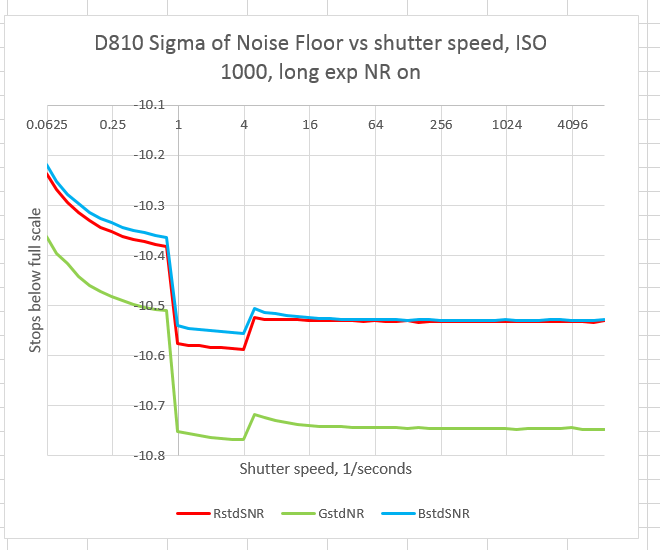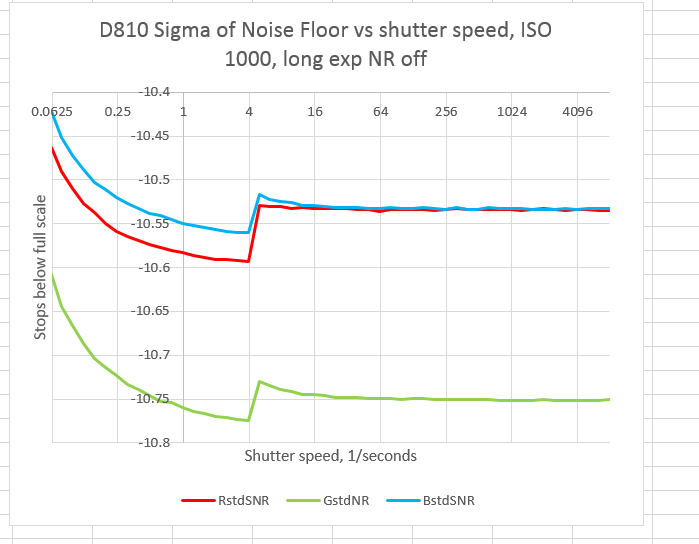Like most cameras I’ve used, the D810 has an option to have the camera do processing to remove noise a for long exposures. Like most people I know, I leave if off most of the time.
I made a series of dark-field exposures with and without the long-exposure noise reduction:


Not what I expected. First off, the long exposure NR, which starts working at 1.3 seconds, makes the standard deviation worse, not better. Then there’s something that looks like noise reduction that starts to take place below 1/4 second whether long exposure noise reduction is turned on or off.
But there’s good news, as well. The long exposure noise appears to be quite low.
This camera has all kinds of tricks.
I’m not particularly interested in the D810. But I want to express my appreciation for sharing these invaluable findings (for free!). Because of your findings on the A7s, I have decided to get one. Thank you.
What appears as noise reduction below 1/4 second is a “hot pixel suppression” (also star-killing) algorithm. Unfortunately it is not user configurable (there is no way to turn it off).